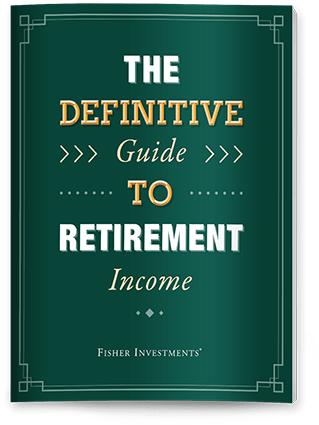Personal Wealth Management / Market Volatility
A Broader View of Tariffs and a Rocky Thursday
Our perspective on markets’ sharp swing.
“Keep your head when all about you are losing theirs.”
Those words, from Rudyard Kipling’s famous poem “If” seem apt now, in light of Thursday’s steep, nearly -5% selloff.[i] Volatility is unsettling, awful in the moment. But taking a deep breath, assessing the situation carefully and looking for what others miss is the wisest approach, in our view. So look with us at the Trump administration’s tariffs, markets’ reaction to them and the potential paths forward.
Several weeks ago, President Donald Trump signaled he would soon announce “reciprocal” tariffs to sync US tariffs with the costs he and his aides say trade partners impose on US goods—their tariffs, plus the costs of alleged currency manipulation and non-tariff trade barriers. Wednesday afternoon, we finally got the actual numbers. Beginning April 5, the administration will impose a blanket 10% tariff rate, with higher rates on the EU (20%), China (34%) and several others. This excludes new tariffs on Mexico and Canada, steel, aluminum and autos. The administration has also confirmed they will exclude copper, pharmaceuticals, lumber, energy and other minerals the US doesn’t produce, as well as Taiwanese semiconductors and a few other things. However, aside from these carveouts, Treasury Secretary Scott Bessent confirmed they will be added to pre-existing tariffs. So, for example, the new rate on Chinese goods will be 54%. That is the 34% announced Wednesday, plus two earlier 10% rounds.
Overall, this is bigger than expected. By our math, they would bring the US’s effective tariff rate to 25.5% and raise the maximum new annual tariff payment to $760 billion, which is 2.6% of US GDP and 0.7% of global GDP.[ii] Now, this doesn’t mean American consumers and businesses will actually be paying that much. In 2018 and 2019, actual tariff revenue was only about 25% of the estimated maximum potential payment.[iii] Businesses were able to reroute trade or make substitutions to reduce the costs. Blanket and reciprocal tariffs make this challenging, and the actual tariff payments will probably be more than 25% of the maximum potential burden. The new 46% tariff rate on Vietnam makes transshipping Chinese goods through there far less attractive, for example. But there are still workarounds on the table, and firms can mitigate them through cost cuts, supplier negotiations and other means. And the US currently lacks the infrastructure necessary to collect all these tariffs, so actual costs likely remain below estimated costs.
At the same time, tariffs of this (or any) magnitude aren’t good. This is our opinion, but it is backed up by economic history and common sense. Tariffs add costs and friction. They make life harder for all Americans. Not just the folks buying imported goods, but all the businesses importing components and raw materials to manufacture finished goods here. Proponents claim tariffs are beneficial in the long run because they will spur more domestic production. But that simplistic view ignores that US state regulations and permitting processes make an immediate production increase impossible—to say nothing of construction costs and whatnot. We all learned in 2022 that you can’t magic production out of thin air. If it is that hard to get supply chains restarted using existing facilities and infrastructure, how much more complicated will it be when companies must build anew? Especially for European and Asian firms trying to navigate American red tape? Even once permits are awarded, it can take years to build an advanced factory. The notion that this will turbocharge US manufacturing is exceedingly far-fetched.
But the initial market reaction was a case of “act first, think later.” Traders quickly registered the worse-than-expected outcome, sending US and most world markets lower (outside Mexico, which rose on a lighter-than-feared hit). Sharp volatility like this is wretched. But it is vital to put it behind us and look forward, remembering markets always move most on the gap between expectations and reality over the next 3 – 30 months. Hence, the question is, where do we go from here?
We see three potential scenarios. Two are positive, and these two look most likely to us. The third is negative and looks less likely, but we are watching closely for its potential ascent.
Scenario one: Legal blowback renders all of this moot. Blanket tariffs immediately raise questions. There will be lawsuits over their constitutionality. There are also real operational issues: The US simply doesn’t have the sheer scale and breadth of bureaucracy needed to inspect shipments and collect tariffs. This is no small matter, considering the lack of established collection mechanisms and sufficient staffing, systems and inspections could prevent officials from enforcing these to anything approaching the letter of the law. Already, we saw delays to closing the “de minimis” import loophole that allowed small-dollar imports to flow tariff free. This is even more complex and cumbersome. There is a high likelihood the courts find these tariffs unconstitutional and in need of Congressional approval. Republicans’ majority is very thin, and a few defectors—perhaps from battleground states and districts—could sink this quickly. Any mitigation here would likely bring markets big relief.
Scenario two: Trade partners compromise. So far, most countries have been willing to negotiate. See Canada and Mexico, the UK, much of Europe and even China, to an extent. Many publicly see Trump’s tactics as starting points for negotiation, with the goal being reduced tariffs and barriers against US goods. Trump said as much Wednesday, saying countries could avoid reciprocal tariffs by being more hospitable to US goods and cutting their trade surpluses with the US (which, several outlets have noted, appears to be the actual mathematical basis for the tariff rates). If this proves true, markets would likely rally on a wave of compromise.
Scenario three: Countries react with hostility, band together and retaliate. This looks less probable, but we acknowledge the possibility, and it would be negative. To this point, we have argued new tariffs don’t have the scale to erase global GDP growth. But full US implementation and global retaliation would be a meaningful negative.
Markets move most on probabilities, not possibilities. So we are mindful of that bad third scenario. But with the first two looking more probable, we don’t think this announcement or the market’s reaction is reason to avoid stocks from here. Even with this development and the market’s selloff, this still looks like a classic correction—sharp, sentiment-fueled drop of -10% to -20%—and not a bear market (deeper, longer-lasting, grueling decline of -20% or worse). Corrections usually have a big scary story that looks, to the naked eye, like a plausible cause. Tariffs fit the bill. Markets are pricing in the fear and worst-case scenarios right now. But over the next 3 – 30 months, they will likely move on how reality measures up to these expectations. Fear permeates the marketplace now. The strong potential for things to go better than feared isn’t yet priced.
So, as difficult as it might feel, be patient. However you feel about what the market is doing, whatever psychological pain the sharp drops cause, firewall it from your portfolio decisions. Remember your long-term goals and the returns you will need over your entire time horizon to reach them. Remember markets’ long-term returns include all selloffs, corrections and even bear markets along the way. Remember a portfolio decline isn’t a loss unless you sell at that lower level and miss the rebound. And remember to keep checking with us for updates.
If you would like to contact the editors responsible for this article, please message MarketMinder directly.
*The content contained in this article represents only the opinions and viewpoints of the Fisher Investments editorial staff.
Get a weekly roundup of our market insights
Sign up for our weekly e-mail newsletter.

See Our Investment Guides
The world of investing can seem like a giant maze. Fisher Investments has developed several informational and educational guides tackling a variety of investing topics.


